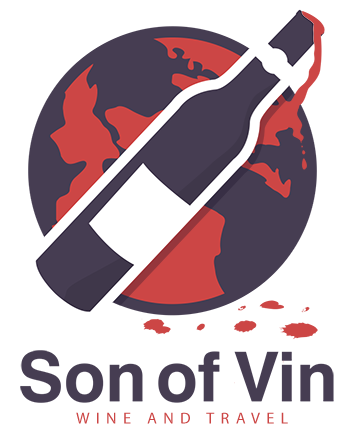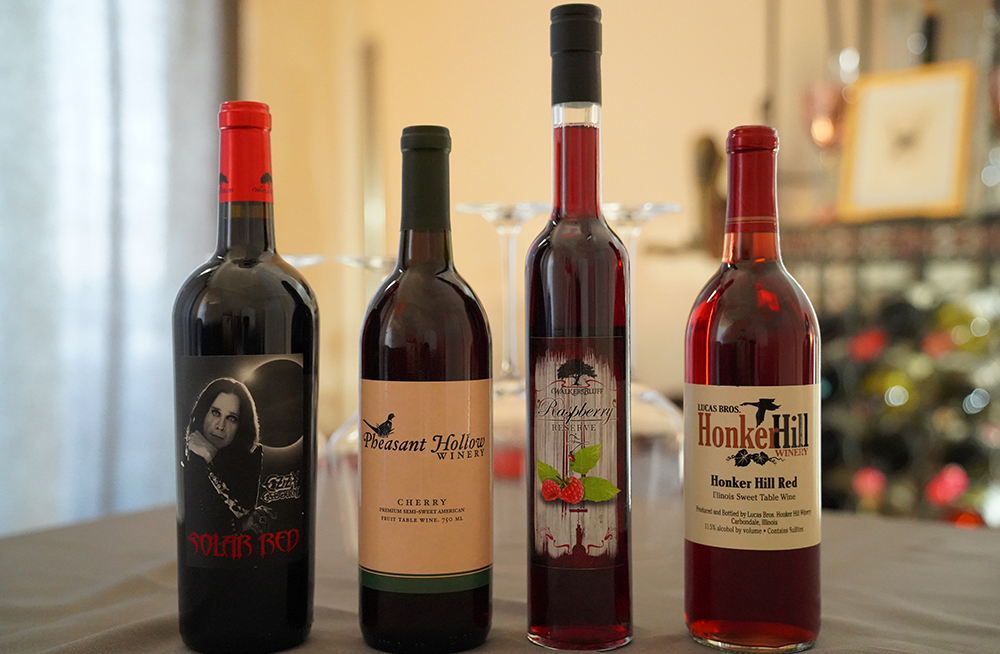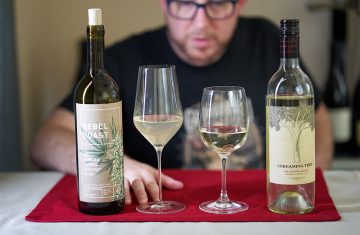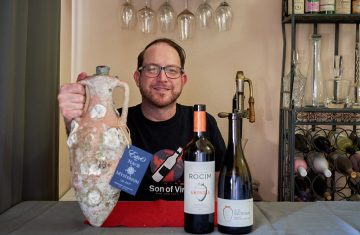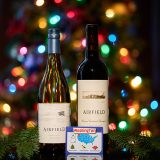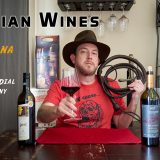Summer is here in Los Angeles and the heat is picking up. Suddenly the beach is on everyone’s mind, and so is chilled sweet beverages.
Super sweet cocktail drinks aren’t something I typically want, but I will try them from time to time. I can’t be a hypocrite though, considering my “gateway wine” around 20 years ago was bottled Sangria after all.
This past weekend I decided it was time to get back on track with my wine tastings and aroma practices. After looking down my long list of proposed tasting sessions, I decided this would be the weekend I drink a bunch of my Kool-Aid wines!
No, these wines weren’t really made out of Kool-Aid. It’s a joking name I like to call super sweet wines with my wife. She wasn’t much of a drinker when we first met, and that meant she knew very little about wine. The few that she did drink were usually sweet, chilled, and somewhat fruity. Her wine knowledge almost only included these two words, Stella Rosa.
So, yes, my Kool-Aid wines. Over the past few years I’ve been collecting wines from my home area of Southern Illinois. When I moved away nearly 20 years ago, there weren’t that many wineries open. Over the past 10 years though, this has changed drastically.
It’s a humid climate and does get fairly cold in the winters with snow. This certainly isn’t the ideal climate for the noble grapes (Cabernet Sauvignon, Merlot, Pinot Noir, etc), but that shouldn’t stop people from making wine. Hybrid grapes like Chambourcin and native grapes like Norton work well in humid climates, and in my opinion, can potentially rival noble grape wines if they are crafted well. The best wineries in Southern Illinois will focus on these red hybrids and natives as well as what their local customers prefer, typically sweet wines.
I’ll admit, sweet wines aren’t something I drink too often. They simply don’t appeal to me very much. I’ll have an occasional glass of Port or Sauternes but that’s about it. So not wanting to overload myself in just sweet wines for this tasting, I decided to also open a mysteious dry red wine I had purchased from there a couple of years ago. So in total, I opened 3 sweet wines and 1 dry red, all from wineries in Southern Illinois. I opted to start with the mysterious dry red, because I’ve always been taught that sweet wines will destroy my palate’s ability to properly experience a dry wine if I do them backwards.
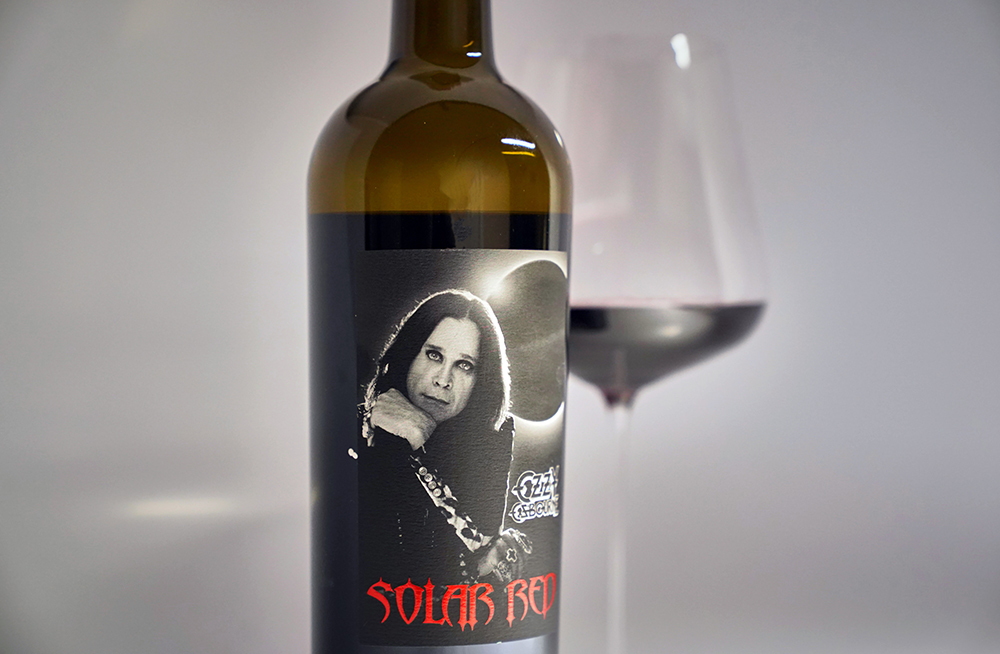
Solar Red is from Walker’s Bluff located in Carterville, Illinois. It was released as a commemorative red wine for Ozzy Osbourne’s performance at Walker Bluff’s concert dubbed Moonstock2017. Southern Illinois was in the prime path for 2017’s amazing total solar eclipse and this concert was one of the largest events held during the eclipse in Southern Illinois.
Since I first purchased this bottle, something had intrigued me about this particular wine. This bottle of wine held a mystery and I finally wanted to solve it. As I mentioned earlier, Southern Illinois is not the typical climate for any of the noble grapes, yet this wine appeared to be a blend of some kind, and nowhere on the bottle does it tell you what grapes were used to make this wine. I learned long ago how to decipher the details on a wine label to get a clearer picture about the possible origin of its contents. This label simply says that it is “American Red Table Wine” and “Vinted and Bottled by”. This backed up my initial thought that this wine was probably not grown in Southern Illinois. In places like California, some winemakers focus on quantity more than quality by making bulk wine that they themselves age and then sell to other businesses. These bulk wines can be pre-bottled or sold in tanks and barrels. But since this wine is listed as “American” wine and not “California” wine, this must mean that it is blended wine from multiple states. Additionally, since it doesn’t say what grape varietal it is on the bottle, it should be a blended red wine. I wanted to see if I could figure out what that blend might be.
It was now time to open the bottle and begin my investigation. To maximize the best possible advantage for myself, I decided to use a Zalto brand wine glass. Their glasses have a solid reputation for amplifying aromas, and I wanted to give myself the best advantage possible. As I’ve said before, I’m still very much learning about wines. The purpose of this blog after all is for me to write down my experiences.
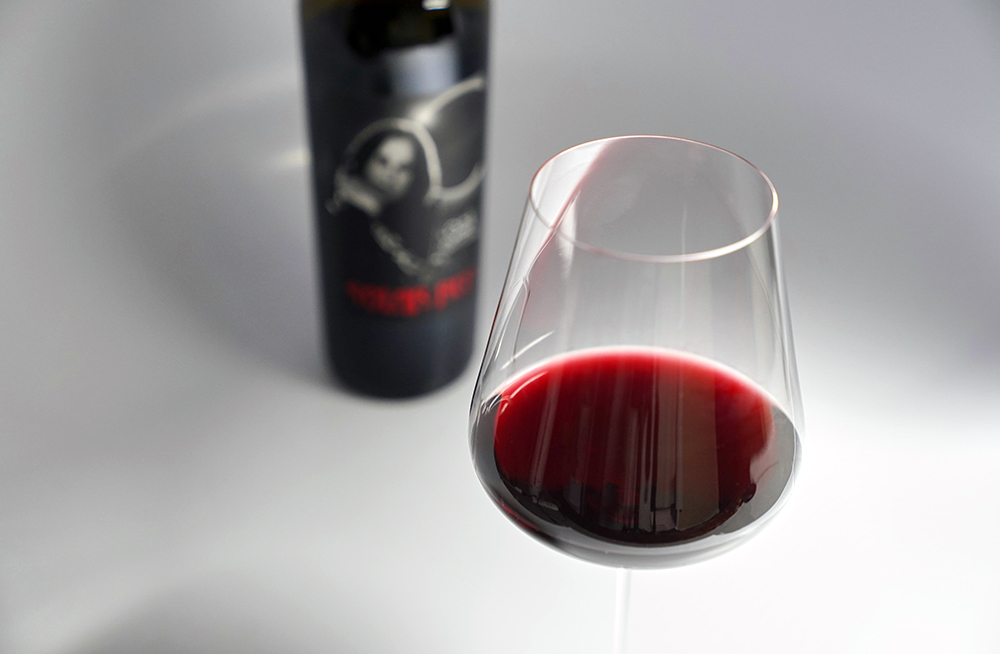
Right away, I could sense a familiar nose I’m used to from less tannic Syrahs, but there was also hints of something else that I couldn’t yet place. Not to linger too long, I moved on to tasting. The wine contained very little tannin as I expected, but the higher acid and overwhelming berry sensation lead me to my next grape, Red Zinfandel. Lodi in the Central Valley of California makes a ton of good but cheap Red Zinfandel, and this certainly reminded me quite a bit of a wine from there. So from my quick first impression, this wine is a blend of Syrah and Zinfandel. I’m guessing that the blend has more Zinfandel than Syrah due to the overwhelming taste.
I decided to do some online research to see what I could find out about this wine. Walker Bluff’s website said that the wine is a blend of Syrah and Zinfandel. Yay! I got them correct. But it doesn’t mention where in the US they sourced their bulk wines or what percentage the blend is of each. Since this is an “American wine”, my guess is that the Syrah came from possibly Washington and the Zinfandel is from the Central Valley in California. Both of these origins are entirely my assumptions. I have no facts to back it up. Ultimately, this wine tasted like a couple of decent wines were blended together and then branded for an event.
Wine drinkers in Southern Illinois seem to have a bit of a sweet tooth. Many of the their wineries I’ve visited focus on sweet wine blends that are obviously made to cater to their customers. It’s simple business, make what will sell.
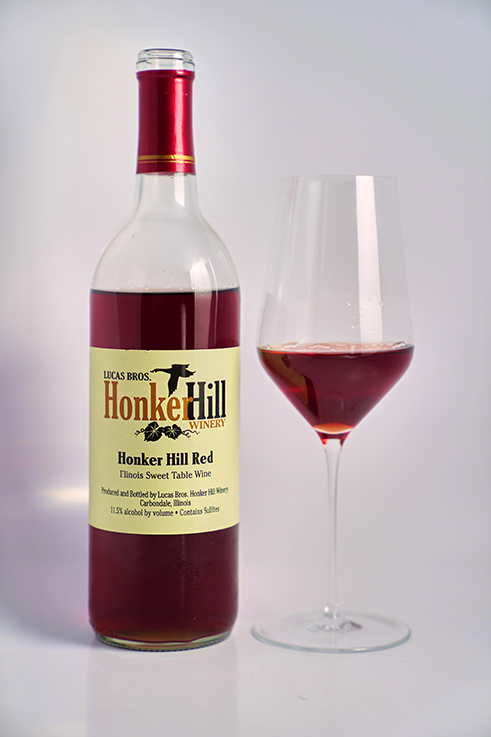
The next wine I tried Honker Hill Red was from Honker Hill Winery in the outskirts of Carbondale, and this winery definitely focuses on sweet wines. Nearly every wine they offer, including a sangria, is sweetened. The bottle did not have a vintage date. I am curious when this was bottled as it had a synthetic cork, which is rarely used anymore. Synthetic corks faded out roughly 10 years ago when Australia moved on to screw tops.
I decided to use a Zalto glass also for this wine as I wanted to maximize its aromas as well. The color was a nice rich red, and it’s aroma smelled like a freshly opened bag of sweet edible grapes blended with Jolly Ranchers.
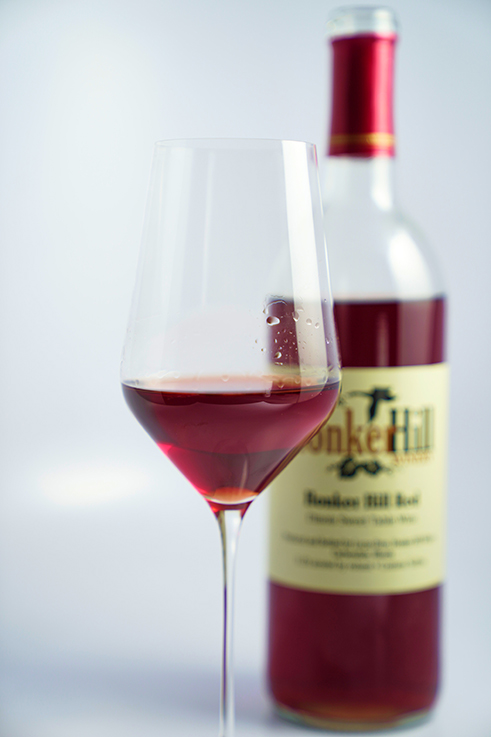
This wine was simply too sweet for me and is probably one of the sweetest I have ever tried. All I could taste was sugar with every additional drink. It was like a Port, but without the extra fun of brandy fortification. I did enjoy the overall berry flavors I could sense between the huge amounts of sugar though. I checked Honker Hills’ website, and they don’t seem to offer many wines less than semi-sweet, which is a bit of a bummer. I would have enjoyed trying something less sweet, but I’m obviously not their primary clientèle focus. This is a dessert wine to me. Something you only sip in small amounts, but I don’t think that’s their intention here. My bottle nor their website tells exactly what grape varietal is used to make this wine, but they do grow their own grapes. This one certainly fits into my Kool-Aid category. Next time, I’m sticking to their semi-sweet wines.
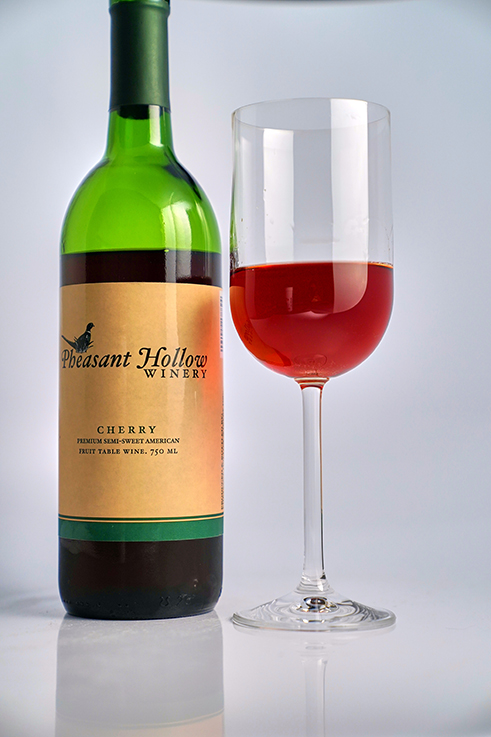
Cherry Wine from Pheasant Hollow Winery in Whittington was the third wine I tried. They are one of the relatively older wineries in Southern Illinois, and have been around since the 1990s. Long before the newer winery boom hit the region.
It’s color was without a doubt “cherry”(no surprise there), and it’s aroma was like opening a jar of syrupy maraschino cherries. It even slightly smelled of strawberries and mint. I started to wonder if this was a real wine or just a cherry flavored liquor. It was that pungent. This wine tasted semi-sweet and much more to my liking on a hot summer day. Like a cherry snow cone while watching Summer baseball. Nothing online or on the bottle stated whether it is 100% made from cherries, or if this is a blend of grape and cherry wines. I typically see the latter when it comes to fruit wines. I drank this wine in one of my older Crate and Barrel “Stella “ wine glasses as it’s aromas were strong enough that it didn’t need any additional help.
This is obviously just a personal preference, but semi-sweet wines are so much more balanced. They offer just enough sugar to experience sweetness, but not too much to override the other tastes in my mouth.
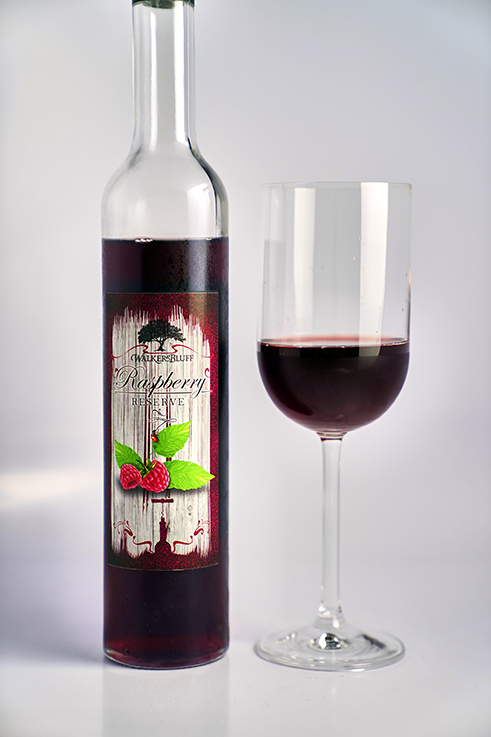
The final wine I tried was Raspberry Reserve from Walker’s Bluff. This wine was using one of the newer style of glass stoppers (rather than corks) starting to be found more in Europe. I believe they must source the raspberries from other locations (including possibly other states) as the words “American Raspberry Table Wine” was on the label. It’s aroma reminded me of dried raspberries rather than the fresh fruity kind. Definitely a darker jam aroma to it. It’s taste had a strange bitter but semi-sweet sensation to it. I’m wondering if this bottle was going bad or if this is just the natural taste to it. It reminded me of figs blended with plums and blackberries. Overall I could drink more than one glass of this wine. It’s sweetness was not overwhelming but I fear the funky taste may bother me after too long. I also drank this wine in one of my older Crate and Barrel “Stella “ wine glasses.
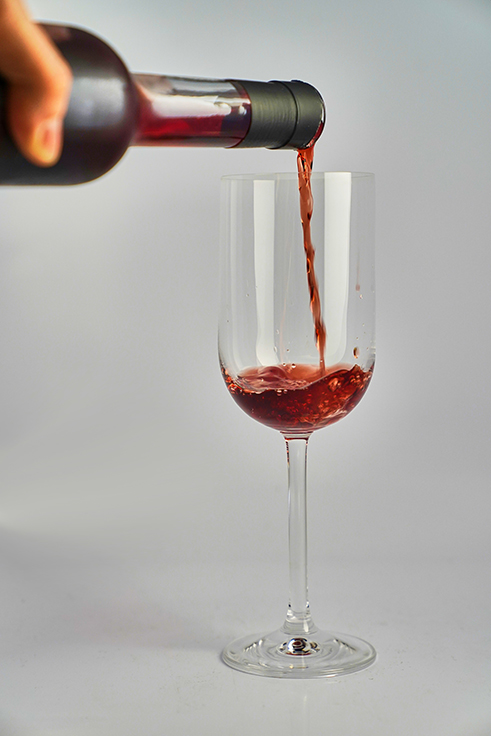
If I had to pick my favorite from this group of sweet wines, I’d pick the Cherry Wine from Pheasant Hollow Winery. It was the most drinkable to me. Not too sweet, and no lingering finish that sticks with you for too long afterward.
I find it interesting that not one of these wines had a vintage date. This either means they are blending from multiple years or simply do not think it matters for their target audience. I’d actually be interested to know what the reason would be.
One of the best features for many of these wineries around Southern Illinois is that lots of them offer live entertainment. From live music to dinner theater, there is always something going on to pull in the customers.
This tasting was a bit of a struggle for me. I knew that going in since I’m not the biggest sweet wine fan. I have previously tasted lots of dryer wines back there and have become a big fan of Chambourcin, Norton, and Seyval Blanc because of it.
For more info about wines in Southern Illinois, check out the website for Shawnee Hills Wine Trail.
I love to expand my palate’s range and try new things, but it’s obvious to me that I have a ways to go before I can truly enjoy sweet wines more.
Until next time!
